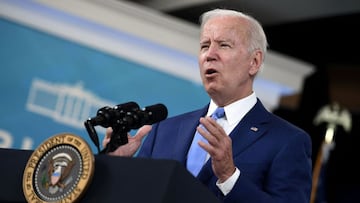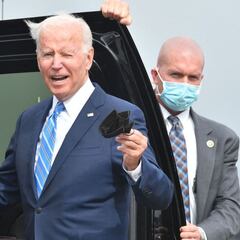How has the expiration of additional unemployment benefits affected the employment rate?
The decision to allow the supplementary jobless support to expire in September was controversial and early figures suggest that it has not boosted employment.


The September jobs report was released on Friday and, as was the case, in August, fell well short of expectations and offered further evidence to suggest that the United States’ economic recovery is slowing.
Overall just 194,000 new payrolls were added in September according to the Bureau of Labor Statistics. Furthermore the Labor Force, the number of employed individuals and people actively looking for a job, fell by 183,000, suggesting that some were beginning to lose faith in the hope of finding a job.
The September job report is the first major evidence of the effect that the additional unemployment benefits had on unemployment in the US, and undermines claims that the boosted support was hampering employment figures.
President Biden doesn’t take questions after acknowledging he wishes progress was happening faster following weak jobs report. He pinned it on Delta variant & touted 4.8% unemployment rate, though that drop could be in part because people are leaving the workforce entirely.
— Kaitlan Collins (@kaitlancollins) October 8, 2021
How did the additional unemployment benefits affect unemployment?
Since the beginning of the pandemic the federal government had offered additional unemployment payments to out-of-work Americans to supplement the state-funded programmes. Typically, states would only offer around 26 weeks of unemployment support and with millions experiencing long-term unemployment due to covid-19 restrictions, it was decided that additional support was required.
However in summer 2021 a number of mainly Republican-led states argued that the additional payments were providing an incentive against finding a job, and moved to remove the federal programmes ahead of schedule. On 6 September the additional unemployment support expired nation-wide, but the early evidence does not show any real sign of employment increase.
Remember when conservatives claimed that the expanded unemployment benefits were keeping people from going back to work?
— Robert Reich (@RBReich) October 8, 2021
Turns out, that was hogwash: After the benefits expired last month, the labor force participation rate went down.
Will they admit they were wrong?
Data from the Bureau of Labor Statistics showed that the US jobs market added 962,000 new jobs in June; 1.1 million in July; and 366,000 in August. With this in mind, the 194,000 additional jobs added in September seems fairly underwhelming, and suggests that the additional unemployment benefits were not dissuading people from a return to work.
Report echoes findings that UB did not hamper employment
From June onwards 26 states, 25 of which were led by a Republican governor, chose to opt out of the additional unemployment support programmes ahead of the Labor Day expiration date set by President Joe Biden. Many of them claimed that the boosted benefits were fuelling a labor shortage, but numerous studies have dismissed that suggestion.
Related stories
The New York Times reports that states who prematurely withdrew from the supplementary programme “found at most a modest increase in employment.” On average across these states, each out-of-work individual lost around $278 a week in benefits because of the change, but gained just $14 in earnings.
“The idea was that there were lots of jobs — it was just that people weren’t looking. That was the narrative,” said Arindrajit Dube, an economist at the University of Massachusetts. “I don’t think that story holds up.”

